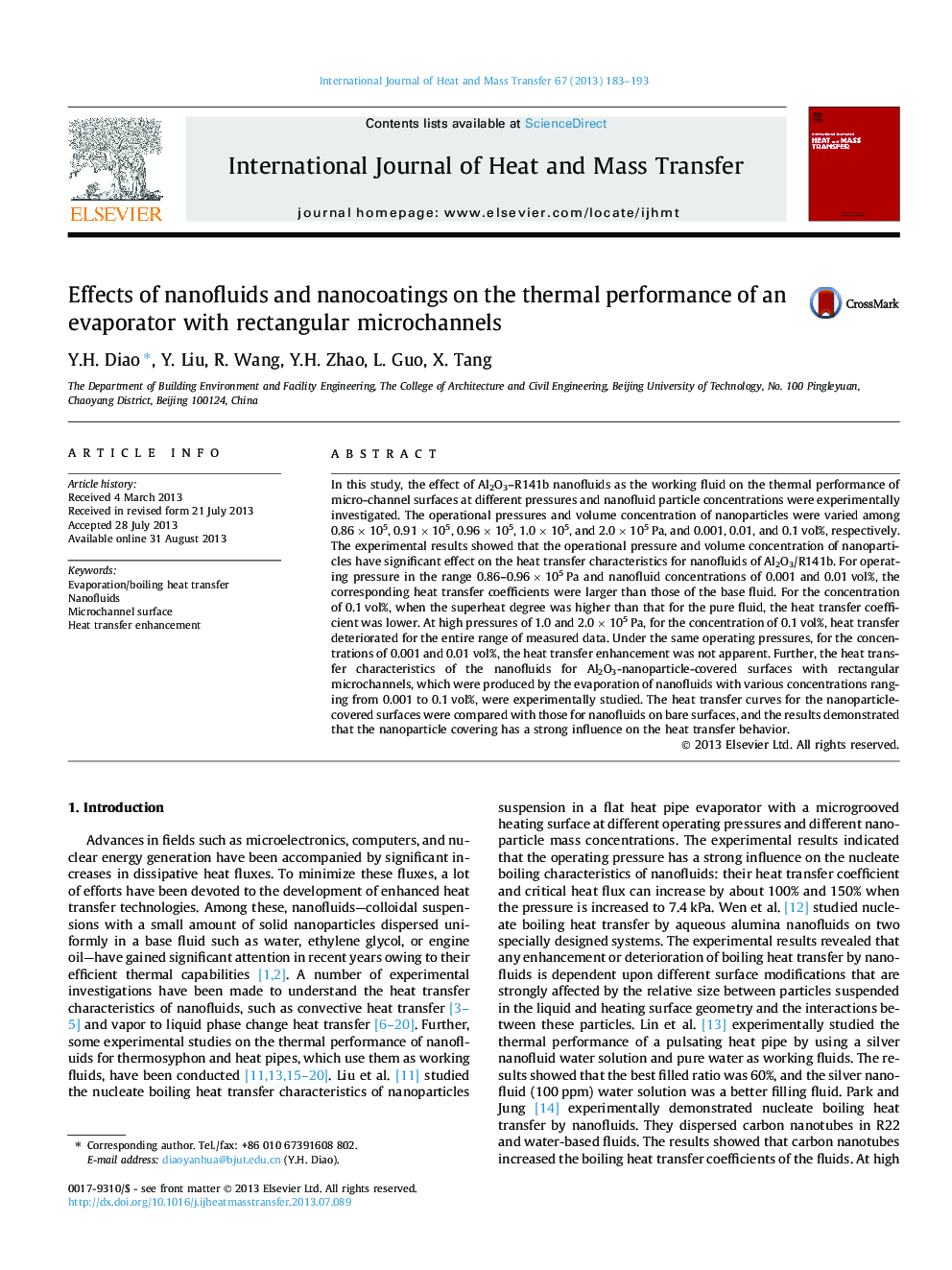| Article ID | Journal | Published Year | Pages | File Type |
|---|---|---|---|---|
| 657933 | International Journal of Heat and Mass Transfer | 2013 | 11 Pages |
In this study, the effect of Al2O3–R141b nanofluids as the working fluid on the thermal performance of micro-channel surfaces at different pressures and nanofluid particle concentrations were experimentally investigated. The operational pressures and volume concentration of nanoparticles were varied among 0.86 × 105, 0.91 × 105, 0.96 × 105, 1.0 × 105, and 2.0 × 105 Pa, and 0.001, 0.01, and 0.1 vol%, respectively. The experimental results showed that the operational pressure and volume concentration of nanoparticles have significant effect on the heat transfer characteristics for nanofluids of Al2O3/R141b. For operating pressure in the range 0.86–0.96 × 105 Pa and nanofluid concentrations of 0.001 and 0.01 vol%, the corresponding heat transfer coefficients were larger than those of the base fluid. For the concentration of 0.1 vol%, when the superheat degree was higher than that for the pure fluid, the heat transfer coefficient was lower. At high pressures of 1.0 and 2.0 × 105 Pa, for the concentration of 0.1 vol%, heat transfer deteriorated for the entire range of measured data. Under the same operating pressures, for the concentrations of 0.001 and 0.01 vol%, the heat transfer enhancement was not apparent. Further, the heat transfer characteristics of the nanofluids for Al2O3-nanoparticle-covered surfaces with rectangular microchannels, which were produced by the evaporation of nanofluids with various concentrations ranging from 0.001 to 0.1 vol%, were experimentally studied. The heat transfer curves for the nanoparticle-covered surfaces were compared with those for nanofluids on bare surfaces, and the results demonstrated that the nanoparticle covering has a strong influence on the heat transfer behavior.
